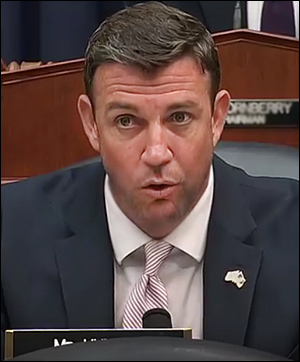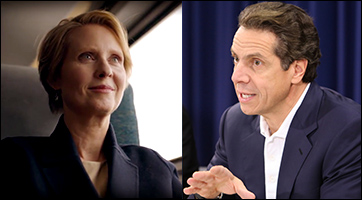By Jim Ellis
Sept. 14, 2018 — Gov. Andrew Cuomo, as predicted, easily won the Democratic gubernatorial primary last night with a 65-35 percent victory over actress Cynthia Nixon. Late polling projected the governor to be breaking the 60 percent threshold with Nixon lagging way behind. He will now have little trouble winning a third term in the general election against the new Republican nominee, Duchess County Executive Marc Molinaro.
 US Rep. Sean Patrick Maloney’s (D-Cold Spring/West Point) quest to become the state’s attorney general ended last night. Despite a late poll suggesting he had forged into the lead, Maloney dropped to third position in the actual vote.
US Rep. Sean Patrick Maloney’s (D-Cold Spring/West Point) quest to become the state’s attorney general ended last night. Despite a late poll suggesting he had forged into the lead, Maloney dropped to third position in the actual vote.
The Democratic primary winner was New York City Public Advocate Letitia James, who said that she “ … can’t wait to wake up each and every day, go to the office, sue somebody and then go home,” in her victory speech and stated that she wants to target President Trump, the NRA, and state corruption, captured 38 percent of the Democratic primary vote.
In second, with 30 percent, was frequent Democratic candidate Zephyr Teachout who challenged Gov. Cuomo back in the 2014 party primary. Rep. Maloney drew only 24 percent. He will now return to the congressional campaign trail since he was re-nominated back in the June federal primary.
THE FOX POLLS
Fox News just released a series of five polls in key US Senate states where they find very close races. Fox conducts its surveys jointly through two research entities, a Democratic polling company, Anderson Robbins Research, and the Republican firm of Shaw & Company Research.
All five studies were conducted during the Sept. 8-11 period. The organizations used the live interview method to conduct their data gathering through a combination of landline and cell phone calls. The polling universes begin with a registered voter pool from which likely voter segments are derived. Results are reported for both the larger and more refined polling cells. In all cases, the candidates’ individual approval ratings differed very little between registered voters and likely voters.
Arizona (801 registered Arizona voters; 710 likely voters)
• Rep. Kyrsten Sinema (D-Phoenix) has a 47-44 percent edge over Rep. Martha McSally (R-Tucson) among likely voters and 46-42 percent within the broader registered voters universe.
• President Trump’s Arizona job approval rating is 49:49 percent positive to negative. This contrasts with Rep. Sinema’s 52:35 percent index and McSally’s 47:43 percent.
Obviously, the ballot test shows that either candidate can win the race. Rep. McSally has a lesser favorability rating than Rep. Sinema largely because she was attacked in a multi-candidate primary, whereas the latter woman was a consensus Democratic candidate who breezed through the primary without being forced to absorb negative hits.
Continue reading →







